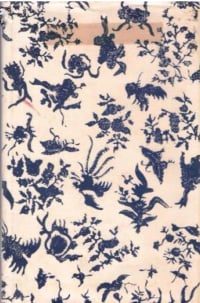Traditional Balinese Culture
- Title
- Traditional Balinese Culture
- Original language
- English
- Author(s)
- Illustrator(s)
- Publisher
- Columbia University Press
- ISBN
- 978-0231030847
- Publication date
- 1970
- Subjects
- ethnography
- customs
- culture
- Find Book
- Amazon
- Related Env. Initiatives
- Related Places
- Related Biographies
- Related Children's Books
- Related Holidays
- Related Folktales
- Related Comics
- Related Lontar
- Linked words
Description(s)
“This book brings together a group of essays on the basic culture of the exotically beautiful and outstandingly creative people of Bali, before the changes brought by contact with the outside world since World War II. In the 1930s the fame of the island of Bali had spread in international circles, and many distinguished scholars, artists, and esthetes were attracted to approach the mystery of the people’s creative life, their irrepressible gayety. and their deep involvement in religious ceremonial which inspired continual dedication to renewed artistic efforts, all on a background of a simple agricultural life which seemed to bring absolute peace and contentment. In those days the Balinese greeted with enthusiasm all interest expressed by Westerners in the beauties and complexities of their culture, and, when the various investigators extended their search for varieties of expression to island-wide surveys, the Balinese responded with affectionate respect to their knowledgeability in Balinese lore. Temples were open to foreigners without question, and photography was accepted without self-consciousness. Miss Belo’s study of the psychologically significant attitudes and practices of high caste Balinese and those of no caste in regard to the birth of twins was the first of this group of essays to appear, and it attracted the interest of her future collaborators, as it has more recently attracted interest in psychoanalytic literature. She has collected here the early papers of a number of gifted specialists, in music, the dance, drama, the plastic arts as well as in behavioral science. Several essays show the impact of the artistic tradition on children and their development into the happy fun-loving people, untorn by political stress, who populated the island at that time. The authors present a document in which we can see a promise - a promise for the survival of a culture of such symbolic investment into happier times.” BOOK JACKET







Enable comment auto-refresher